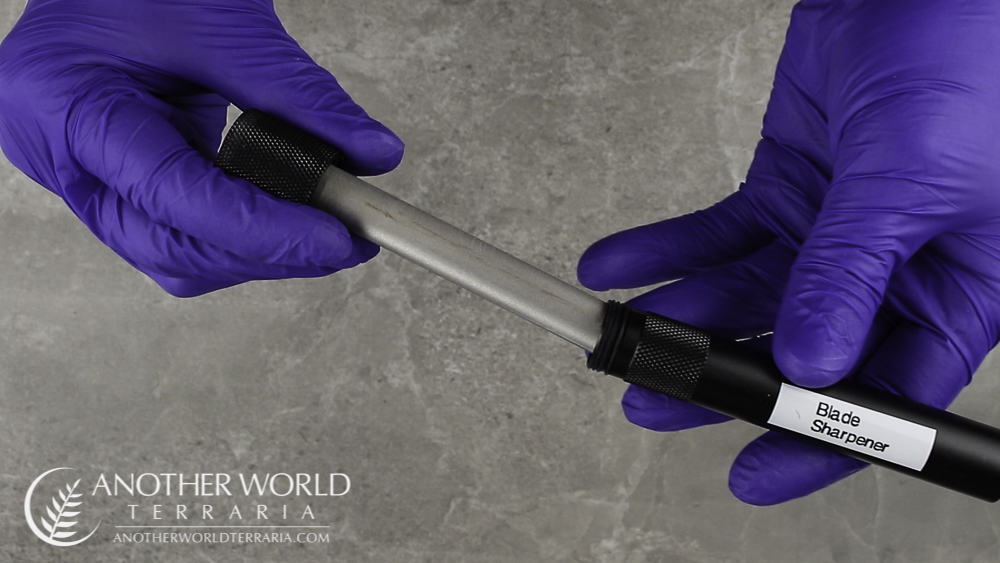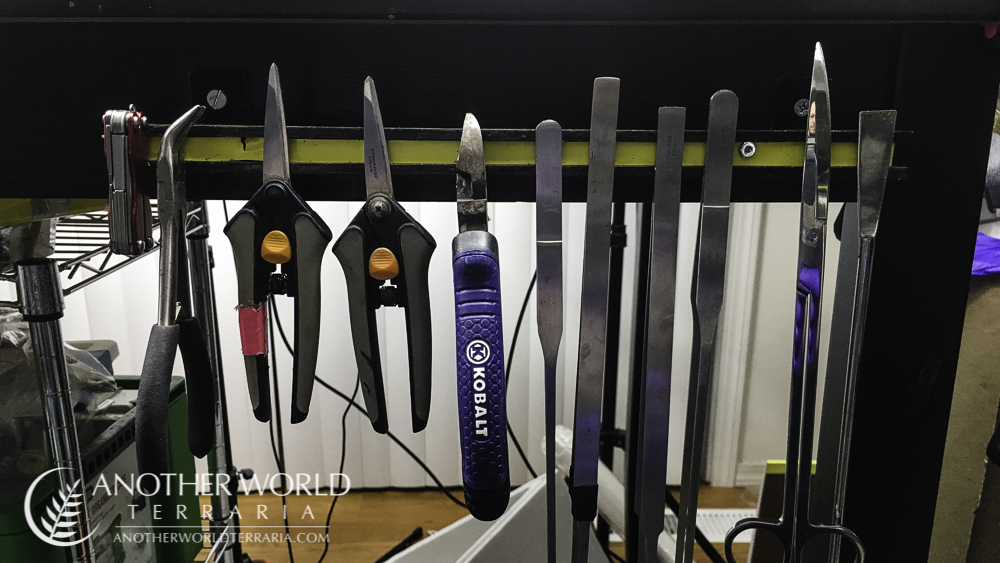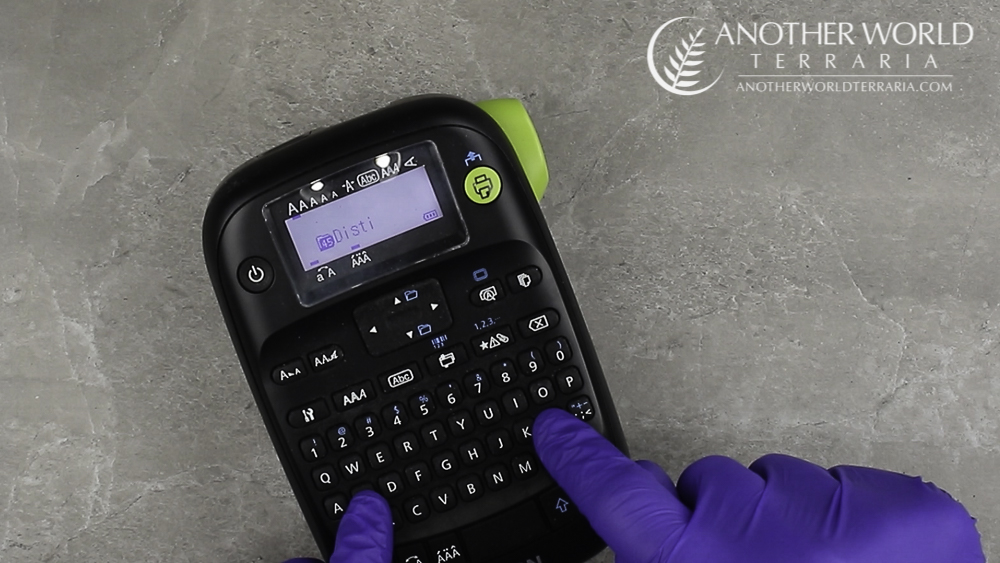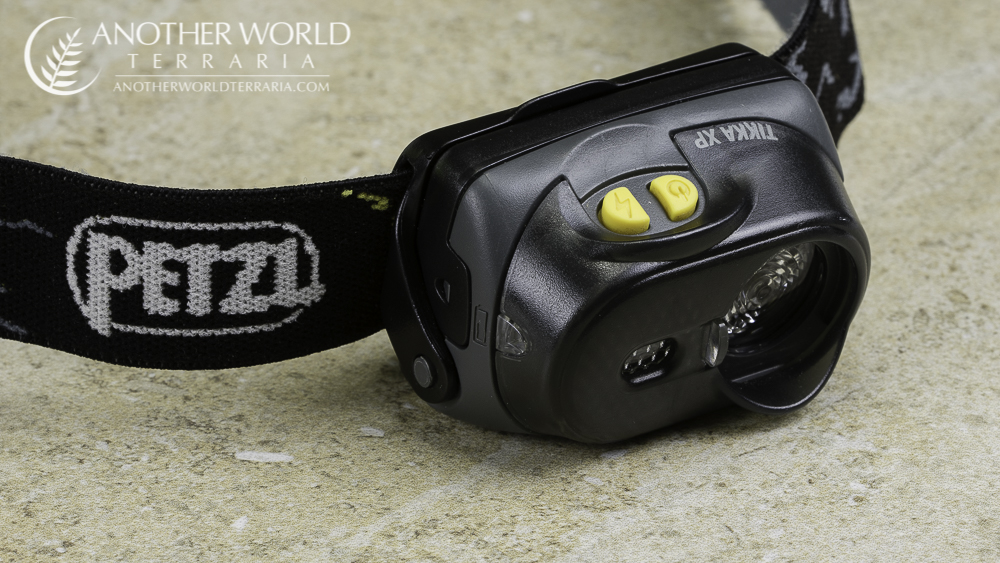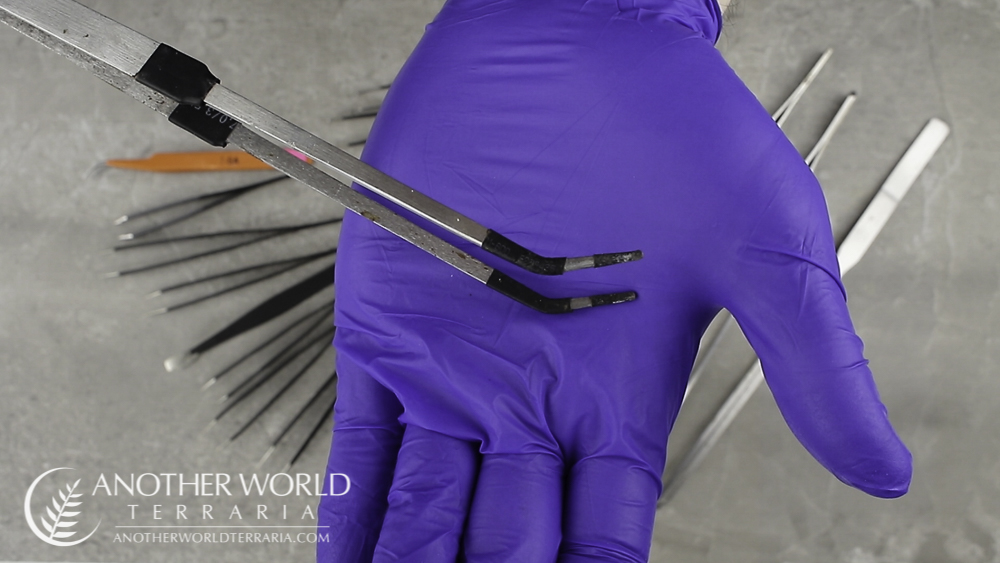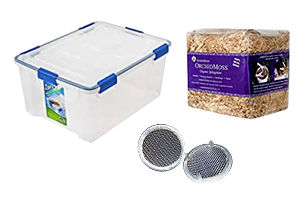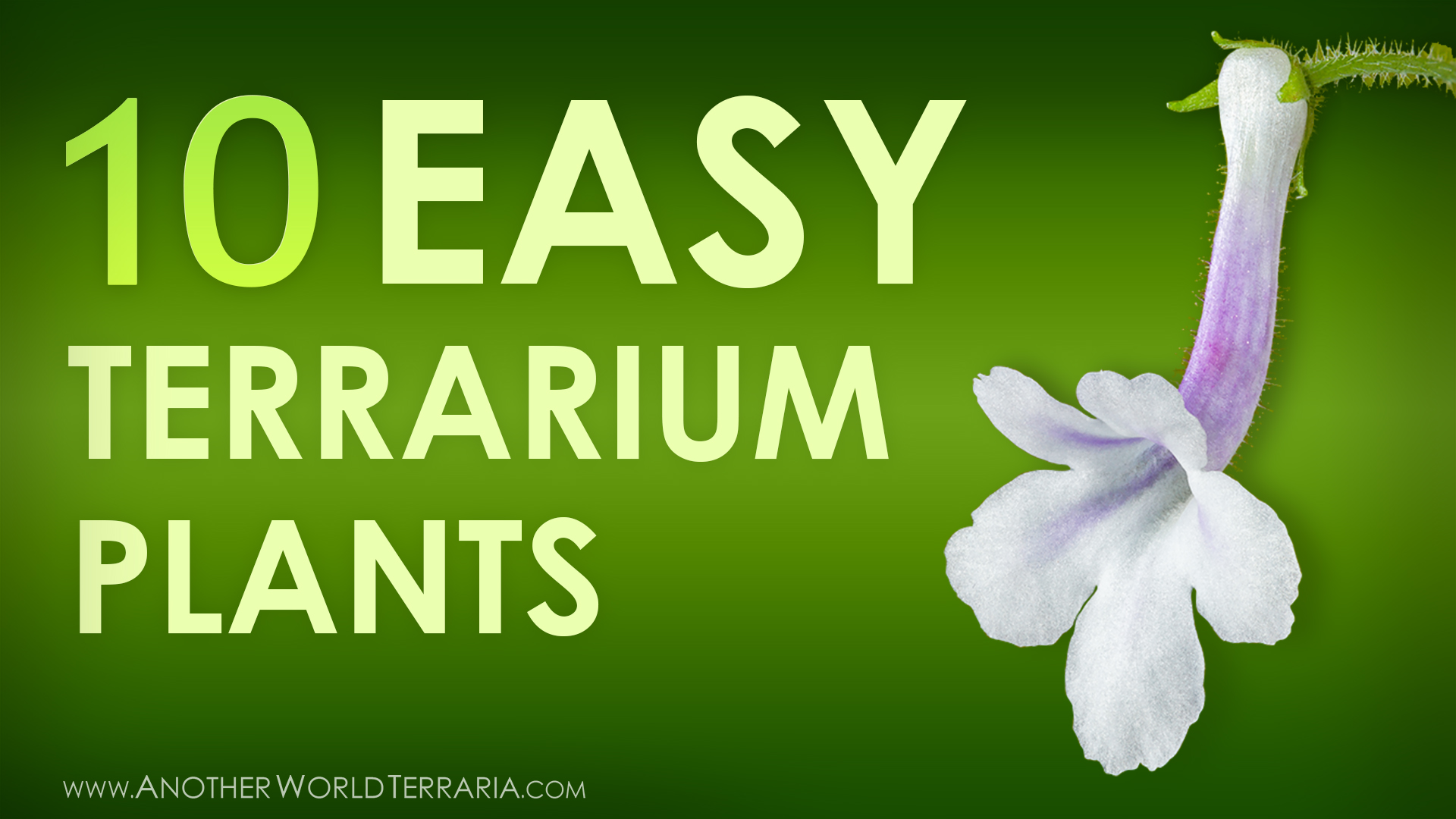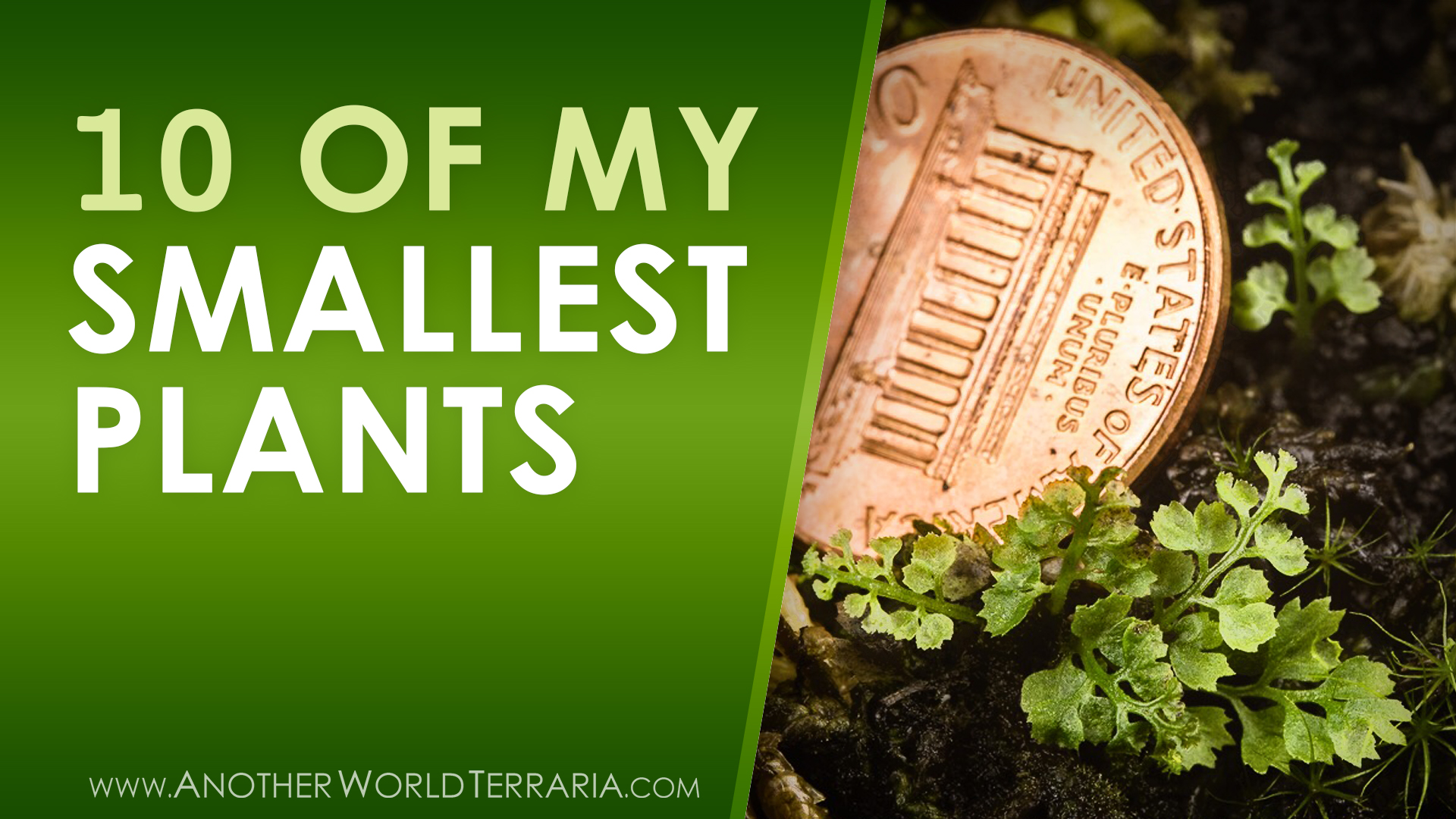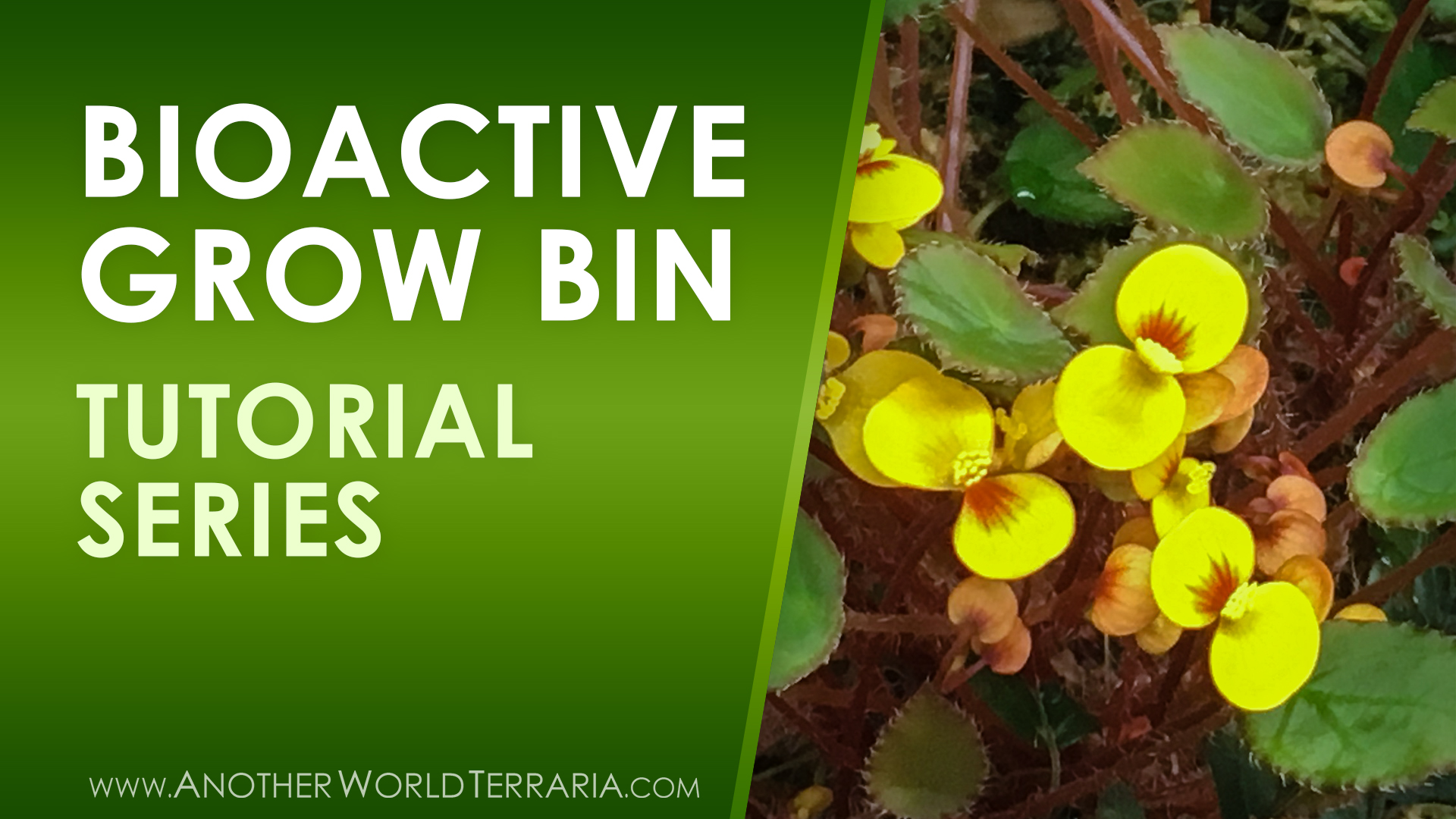Information Covered
Learn about the 5 tools I use the most, every day, for plants and terrariums! I also share some pro tips for using them! Let’s do this!
Tool List
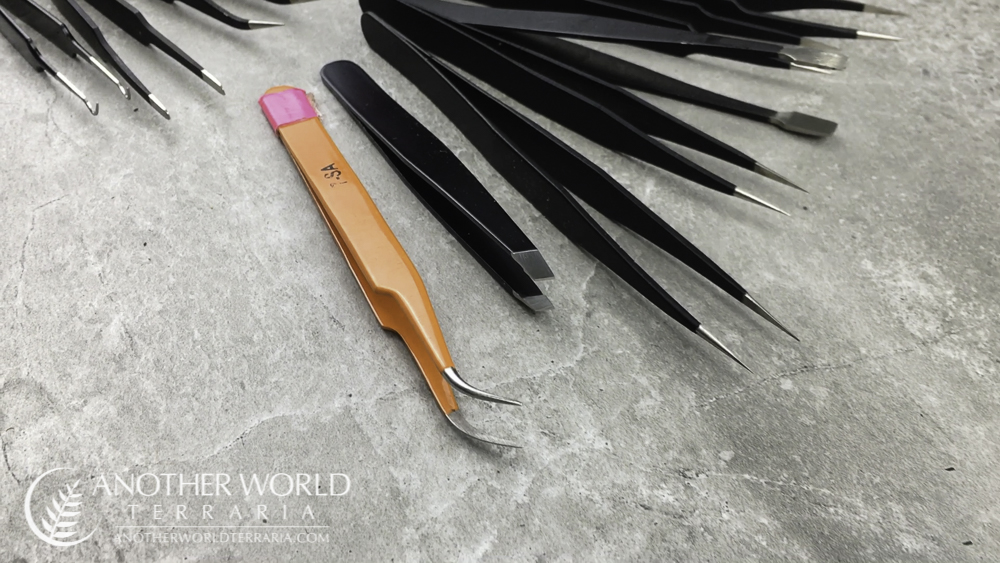
#1. Tweezers
I use all sorts of tweezers on a daily basis and I have a wide variety of sizes and shapes.
- Very large and long
- Small and short
- Pointed, curved, rounded, square, etc
I like to buy kits that have multiple tweezers in them because I get more value for the price.
There are also some good larger tweezers that come with aquascaping tool sets, and the other tools are useful as well.
Some examples of things that tweezers are useful for are:
- Working with micro plants, and moss and liverworts
- Poking holes in substrate for planting small plants, cuttings, etc
- Picking off old flowers, foliage, and debris
- Thinning moss when it’s overgrowing terrariums or smothering micro plants, such as Specklinia dressleri or Lemmaphyllum microphyllum “Shi Shi.”
- Working in hard to reach areas in terrariums
- Inserting fertilizer pellets below the surface of substrate, such as I demonstrate in my Emersed Buce Tutorial Series and Fertilizer video.
Some tips for tweezers are:
- The end of the handle is useful for tamping down moss, small plants, and substrate, when planting terrariums
- You should disinfect tweezers after using them on plants which haven’t been through a quarantine, after working with plants which may have disease or pests, and after using them in areas with mold.
- You can put heat shrink tube on some parts to reduce the risk of scratching glass when working in terrariums, as well as to act as a bit of cushion when working with micro plants
- A magnetic toolbar is useful for storing them, although some won’t stick to it
Tweezer Kit
https://amzn.to/2ZXEQbo
Large Tweezer Kit
https://amzn.to/2Plf5jf
Aquascaping Kit with Large Tweezers
https://amzn.to/2O384Tw
Magnetic Toolbar
https://amzn.to/3b0Mdox
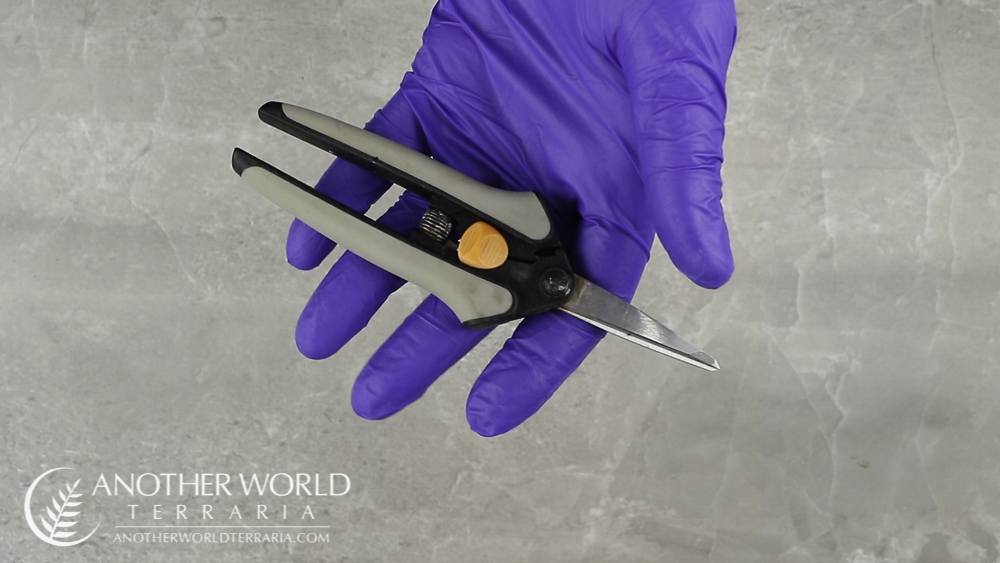
#2. Micro Shears
My favorite micro shears are the Fiskars Softouch. I like them so much that I have two pairs.
Some examples of things that micro shears are useful for are:
- Trimming small plants
- Cleaning plants, such as removing old foliage, flowers, diseased portions, dead roots, etc
- Taking cuttings
- Snipping thread after attaching plants to epiphytic mounts
Some tips for micro shears are:
- You should disinfect shears after using them on plants which haven’t been through a quarantine, after working with plants which may have disease or pests, and after using them in areas with mold.
- I’d recommend having at least two pairs of shears, so you can use one while the other is being disinfected, and if you have plants in multiple rooms it’s nice to have a pair within close reach.
- Occasionally sharpen the blades with a high quality sharpener.
- A magnetic toolbar is a convenient and tidy way to store shears and other tools
Fiskars Softouch Micro Shears
https://amzn.to/2MsXVii
Other Micro Shears
https://amzn.to/2NHPdxe
Sharpener
https://amzn.to/2P6CX9V
Magnetic Toolbar
https://amzn.to/3b0Mdox
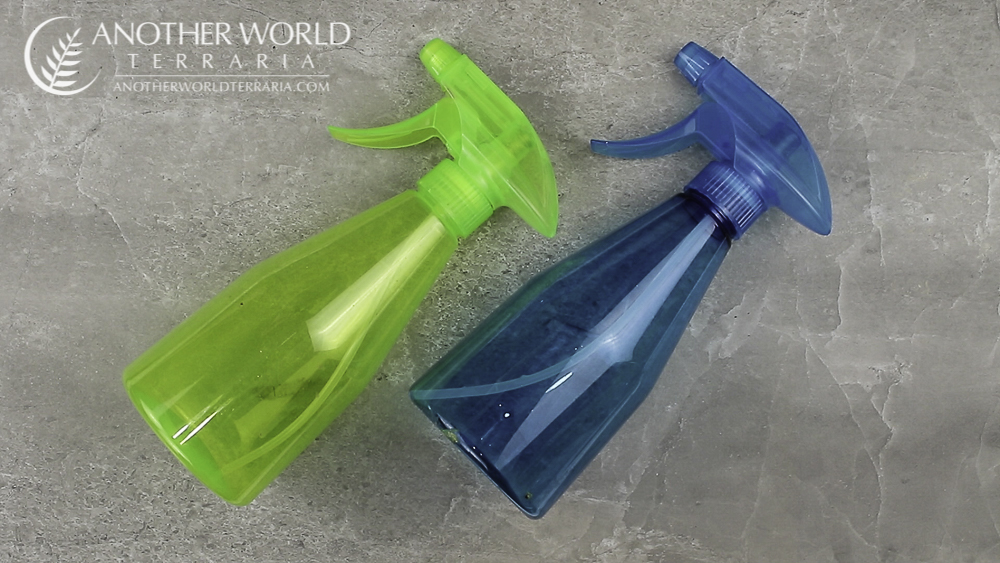
#3. Water Sprayers
I use two types of water sprayers
#1. Pump sprayers
These have a pump which builds up pressure in the reservoir, and then a trigger is used to release the water spray. They are better for bigger jobs, such as watering many plants, watering large terrariums, and watering areas that are hard to reach. I have two models of pump sprayers; both are Solo brand.
#2. Handheld misting bottles
These spray by pulling a pump action trigger. They’re better for smaller jobs, such as moistening plants and terraria while working with them, or misting small terrariums.
Some examples of things that water sprayers are useful for are:
- Misting terrariums
- Misting and watering plants
- Watering things that are hard to reach
- Rinsing glass and bins
- Spraying liquid fertilizers and chemicals
Some tips for water sprayers are:
- Keep them away from bright light to prevent algae growth
- Release the pressure from pump sprayers if you won’t be using them for a while, to prolong the life of the device.
- You can print labels to specify what is contained in each sprayer, such as the type and strength of a fertilizer
- Some hand held misters have colored heads or bottles, which can be used to color code. For example
- Blue could indicate pure water
- Green could indicate fertilizer
- Red could indicate chemicals
Large Solo Pump Sprayer
https://amzn.to/3r1E1dt
Other Pump Sprayers
https://amzn.to/3uBAWml
Hand Misters
https://amzn.to/3r22D5B
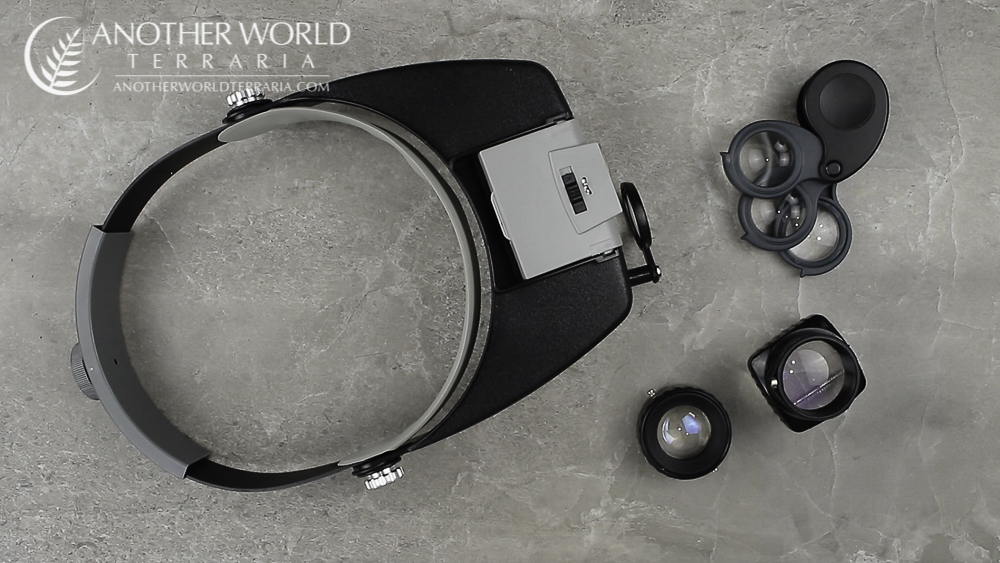
#4. Magnifiers
Headset Magnifier
https://amzn.to/3q0Zodm
Fold Out Mult-Lens Magnifier
https://amzn.to/2PclXz3
I have multiple different types of magnifiers in different powers.
Two are from an old photography slide loupe which I pulled apart, resulting in a strong and a weak magnification lens.
One is a fold out set with three lenses that can be stacked for increased magnification
One is a headband style magnifier with an LED and flip down lenses. This is convenient for work that requires both hands to be free.
Some examples of things that magnifiers are useful for are:
- Examining plants for pests and disease
- Examining plants for identification characteristics
- Getting close up views of bugs, microfauna, and other things
- Getting a closer look at micro plants and tiny moss and liverworts, both for enjoyment and also when working with them
Some tips for magnifiers are:
- Work in well lit areas for a much clearer and sharper view of the subject. In cases where the subject cannot be moved, you can use a portable LED lamp or headlamp for better illumination.
- Use a microfiber cloth for cleaning the lenses
- Get a variety of different magnifications so you can find the right one for the task at hand
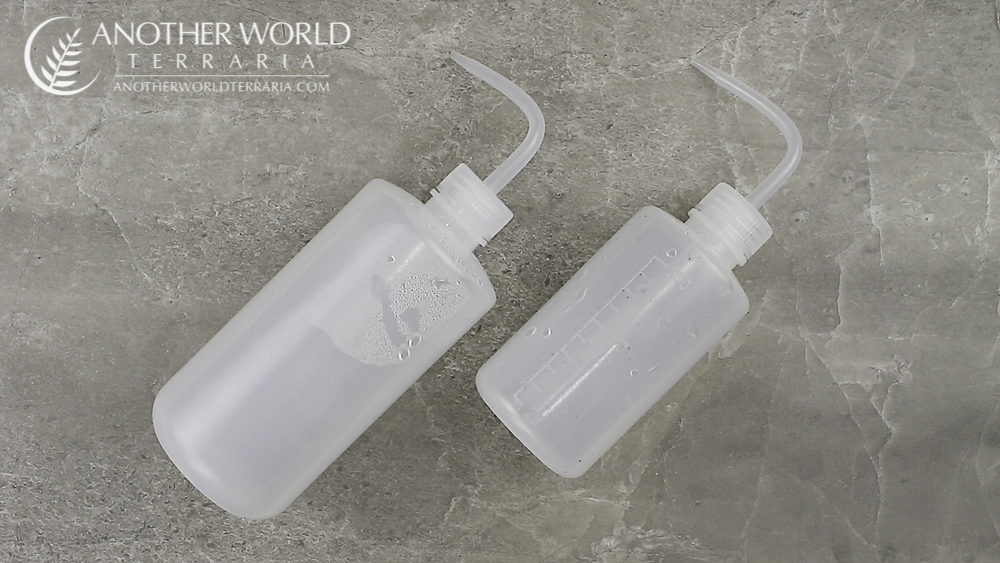
#5. Wash Bottles
These are one of the most underrated tools that few people know about. I have multiple sizes of wash bottles.
Some examples of things that wash bottles are useful for are:
- Watering tiny and small plants, especially ones that need to be watered at the roots without getting the foliage wet
- Watering plants in containers with small openings
- Watering through ventilation holes in deli containers, which saves time.
- Washing containers, such as the inside of bins and terrarium glass
- Washing plants to get dirt and debris off the foliage.
- This is especially useful for textured leaves and sticky carnivorous plant leaves, both of which tend to hold onto debris
- Wash bottles can also be used for dispensing chemicals such as isopropyl alcohol, fertilizers, and so on.
Some tips for wash bottles are:
- Print labels to specify what’s in each bottle, such as pure water, or a fertilizer type and strength
- Keep the bottles away from bright light, especially ones with fertilizer, to reduce algae growth.
Wash Bottles

